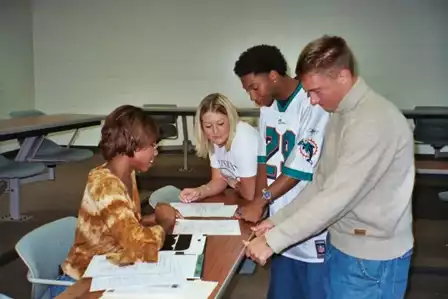One-Minute Write
Advantages of one-minute write
- Provides immediate and useful feedback with minimal time or effort.
- Preparation is quite easy and takes no to very little time.
- Can be used to collect information about specific topics, readings, or activities, as well as larger units like a whole class period. Can be used in any course at any level.
- Requires students to self-assess. Students must mentally review everything they have heard before they can decide what is most important, and they must evaluate their own understanding before they can decide what questions to ask.
- Allows students who may be reluctant to speak up in front of the class to have a voice and ask questions.
Steps and tips for using one-minute write
- Pose the question that you wish students to answer. Some of the more common forms of questions include:
- What was the muddiest point in today's class (or reading, discussion, etc.)?
- What questions do you have that remain unanswered?
- What was the most important thing you learned during this class (from the reading, activity, etc.)?
- What was the main point of the in-class activity/experiment?
Challenges of the one-minute write technique
It is important for the instructor to let students know that their responses have been read and that the instructor is trying to address their concerns; otherwise, they will have no incentive to provide honest feedback the next time. However, doing so can take previous class time, particularly if your discussion elicits additional questions from students. One option is to respond on-line, via email or a class website, or only to respond to the most common point of confusion.
The first few times the instructor asks students to identify the muddiest point, or to pose unanswered questions, students may have difficulty articulating what they do not understand. Also, the instructor needs to be prepared to read their responses with an open mind; instructors are often surprised and frustrated to find that students are unsure about a concept that the instructor believes was explained clearly.
References, further reading, and sources for examples of think-pair-share
Chizmar, John F.; Ostrosky, Anthony L. (1998), The One-Minute Paper: Some Empirical Findings, Journal of Economic Education, v29 n1 p3-10 Win 1998Stead, David R. A review of the one-minute paper, Active Learning in Higher Education, Vol. 6, No. 2, 118-131 (2005)




